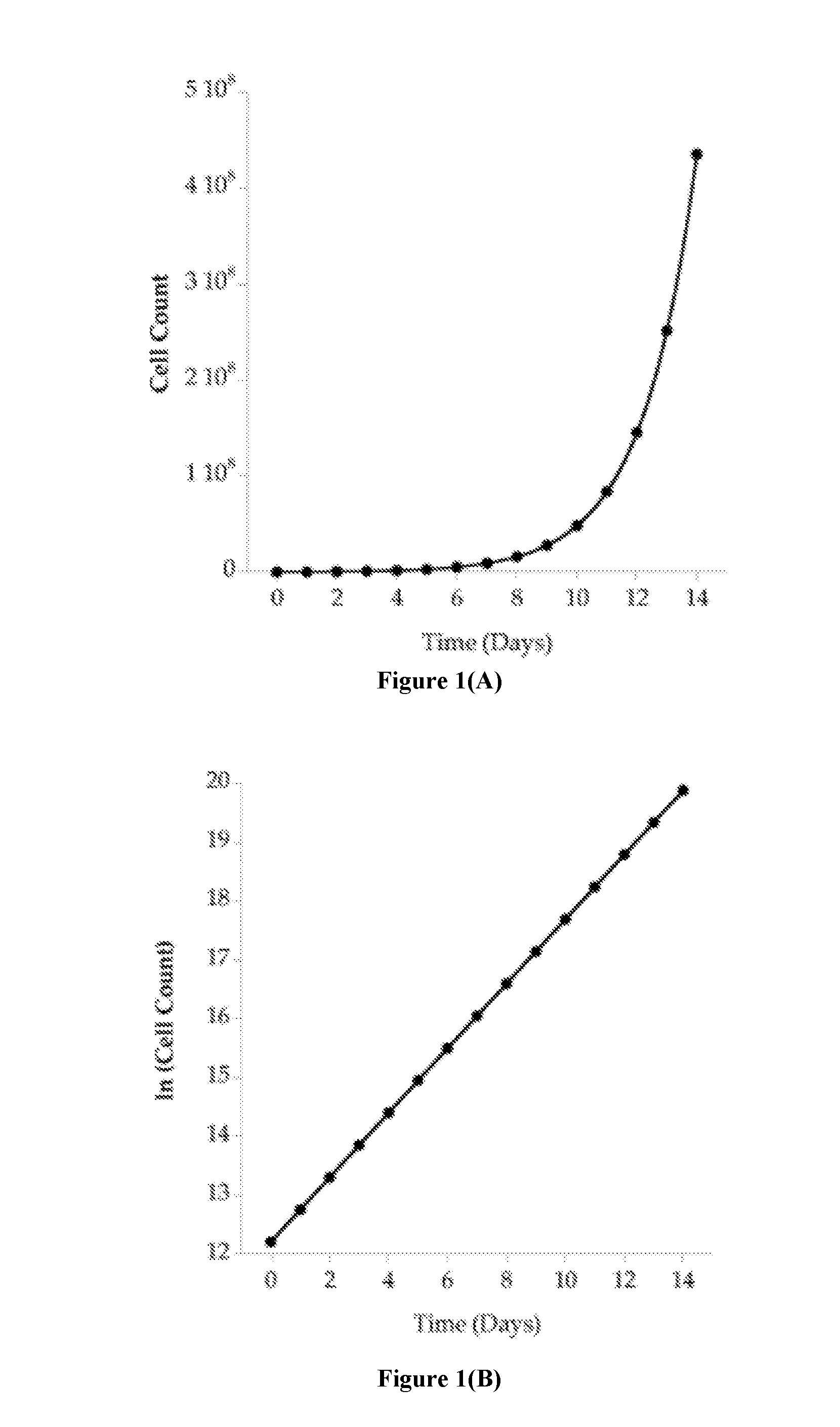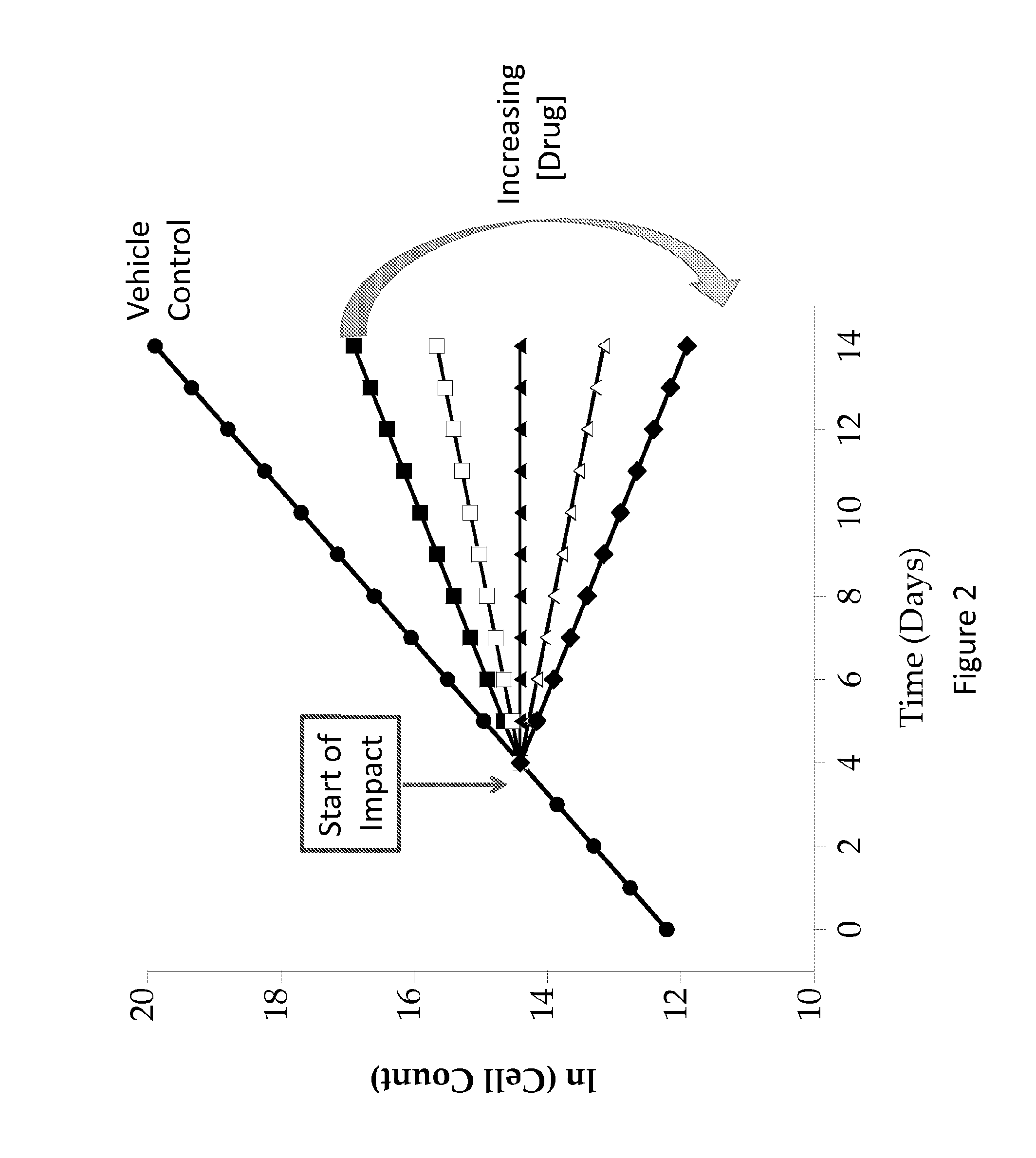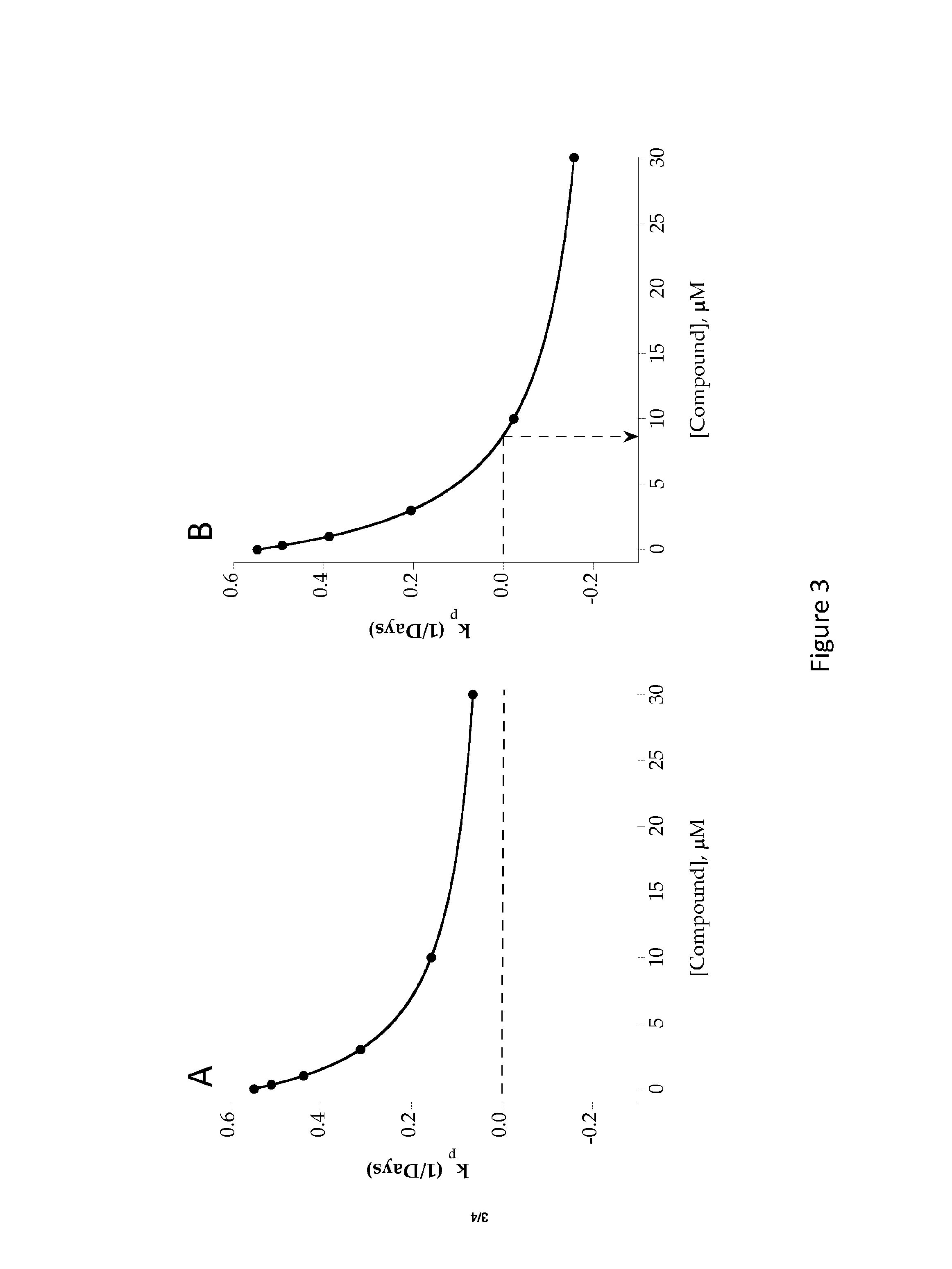Substituted benzene compounds
a technology of substituted benzene and benzene, which is applied in the direction of organic chemistry, organic active ingredients, drug compositions, etc., can solve the problems of complexes lacked the ability to catalyze the methylation of the h3-k27 equivalent residue of a peptidic substrate, disrupted control, and disease states, etc., to inhibit the conversion of h3-k27 and inhibit the activity of histone methyltransfera
- Summary
- Abstract
- Description
- Claims
- Application Information
AI Technical Summary
Benefits of technology
Problems solved by technology
Method used
Image
Examples
example 1
Synthesis of Compound 1: 5-bromo-3-(cyclopentylamino)-N-((4,6-dimethyl-2-oxo-1,2-dihydropyridin-3-yl)methyl)-2-methylbenzamide
[1085]
Step 1: Synthesis of methyl 5-bromo-3-(cyclopentyl(methyl)amino)-2-methylbenzoate
[1086]
[1087]To a stirred solution of methyl 5-bromo-3-(cyclopentylamino)-2-methylbenzoate (0.5 g, 1.75 mmol) in acetonitrile (10 mL), Cs2CO3 (1.02 g, 2.63 mmol) and methyl iodide (1.45 g, 3.5 mmol) were added to it. The resulting reaction mixture was stirred at 80° C. for 4 h. Upon completion, the solvent was removed under reduced pressure and residue dissolved in water and extracted with ethyl acetate. Crude material obtained was purified by column chromatography over silica gel affording the desired compound product without further purification (0.39 g).
Step 2: Synthesis of 5-bromo-3-(cyclopentylamino)-N-((4,6-dimethyl-2-oxo-1,2-dihydropyridin-3-yl)methyl)-2-methylbenzamide
[1088]
[1089]To a stirred solution of methyl 5-bromo-3-(cyclopentyl(methyl)amino)-2-methylbenzoate (1...
example 2
Synthesis of Compound 2: 5-bromo-N-((4,6-dimethyl-2-oxo-1,2-dihydropyridin-3-yl)methyl)-2-methyl-3-(methyl(piperidine-4-yl)amino)benzamide
[1090]
Step 1: 5-bromo-2-methyl-3-nitrobenzoic acid
[1091]
[1092]To stirred solution of 2-methyl-3-nitrobenzoic acid (50 g, 276.2 mmol) in conc. H2SO4 (200 mL), 1,3-dibromo-5,5-dimethyl-2,4-imidazolidinedione (43.4 g, 151.8 mmol) was added portion wise at room temperature and reaction mass was stirred at room temperature for 5 h. On completion, reaction mass was poured on ice cold water, solid precipitated was filtered, resulting residue was washed with water and dried under vacuum giving the desired compound (71.7 g, 99.9%) which was used for further reaction.
Step 2: methyl 5-bromo-2-methyl-3-nitrobenzene
[1093]
[1094]To a stirred solution of 5-bromo-2-methyl-3-nitrobenzoic acid (287 g, 1103 mmol) in DMF (150 mL), sodium carbonate (468 g, 4415 mmol) and methyl iodide (626.63 g, 4415 mmol) were added. Resulting reaction mass was heated at 60° C. for 8 ...
example 3
Synthesis of Compound 3: 5-chloro-3-(cyclohexyl(methyl)amino)-N-((4,6-dimethyl-2-oxo-1,2-dihydropyridin-3-yl)methyl)-2-methylbenzamide
[1106]
Step 1: 5-chloro-2-methyl-3-nitrobenzoic acid
[1107]
[1108]5-Chloro-2-methylbenzoic acid (4 g, 23.39 mmol) was added to cooled conc. H2SO4 (27 mL) at −10° C. lot wise. After 10 minutes nitrating mixture {prepared as mixing Conc. HNO3 (3.3 g, 52.68 mmol) with conc. H2SO4 (4.4 mL)} was added drop wise at −10° C. Resulting reaction mass was stirred at −10° C. for 30 minutes. On completion, reaction mixture was poured on ice cold water, solid precipitated was filtered, washed with water and dried under vacuum giving desired compound (4.95 g, 99%).
Step 2: methyl 5-chloro-2-methyl-3-nitrobenzoate
[1109]
[1110]To stirred solution of 5-chloro-2-methyl-3-nitrobenzoic acid (6.75 g, 31.25 mmol) in DMF (33 mL), sodium carbonate (13.23 g, 125.18 mmol) and methyl iodide (17.77 g, 125.2 mmol) were added. Resulting reaction mass was heated at 60° C. for 4 h. On com...
PUM
| Property | Measurement | Unit |
|---|---|---|
| pharmaceutical compositions | aaaaa | aaaaa |
Abstract
Description
Claims
Application Information
 Login to View More
Login to View More - R&D
- Intellectual Property
- Life Sciences
- Materials
- Tech Scout
- Unparalleled Data Quality
- Higher Quality Content
- 60% Fewer Hallucinations
Browse by: Latest US Patents, China's latest patents, Technical Efficacy Thesaurus, Application Domain, Technology Topic, Popular Technical Reports.
© 2025 PatSnap. All rights reserved.Legal|Privacy policy|Modern Slavery Act Transparency Statement|Sitemap|About US| Contact US: help@patsnap.com



